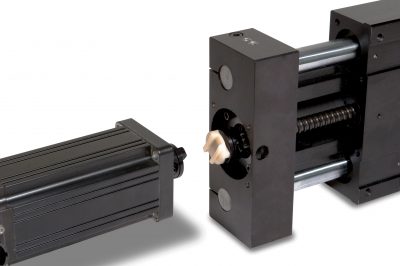Ruland Introduces Oldham Couplings for Actuator Driven Systems

Ruland Manufacturing Co., Inc. presents oldham couplings for actuator driven systems. The oldham couplings are zero-backlash, have a balanced design, and high parallel misalignment capabilities, making them an ideal fit for screw driven actuator applications. The three-piece design allows designers to easily couple an actuator and motor that have keyed or keyless shafts with inch or metric bores.
Oldham couplings can accommodate all forms of misalignment and are best suited for applications with high parallel misalignment. The only resistance on the disk is frictional, limiting bearing loads and protecting delicate components. Oldham couplings have a balanced design for reduced vibration at high speeds. This is especially useful for motor-actuator driven applications that are positioning expensive items that are sensitive to minor vibrations. Oldham couplings are electrically isolating due to the non-conductive nature of the center disk preventing electrical currents from being passed to sensitive equipment.
Oldham couplings are made from two black anodized aluminum hubs that mate to a center disk. This allows for a highly customizable coupling where clamp and set screw hubs can combine inch, metric, keyed, and keyless bores. Ruland uses a proprietary hub machining process that leaves a smoother surface for interaction between the hub and disk, resulting in long life and reduced downtime. The disk is available in acetal for zero-backlash and high torque capacity, PEEK for high temperature and low outgassing, and nylon for dampening and noise reduction. In the event of wear or failure the disk can be replaced, restoring the original performance characteristics to the coupling. Oldham couplings also act as a mechanical fuse during torque overload situations, with the disk cleanly breaking and stopping power transmission.
Ruland oldham couplings are available in bore sizes from 1/8 in to 1-1/8 in and 3 mm to 30 mm. Stainless steel hubs are available upon request for cleanroom, vacuum, or highly corrosive environments. Disks can be manufactured with a center hole to allow further shaft penetration or slots for retention hardware to attach the disk to a hub so it can stay in place during disassembly.





